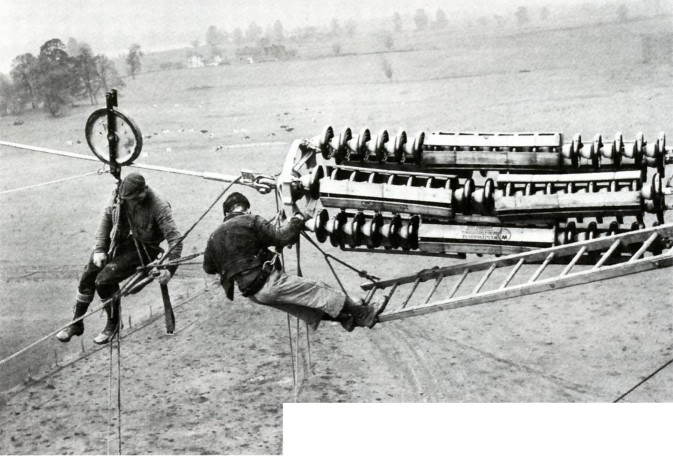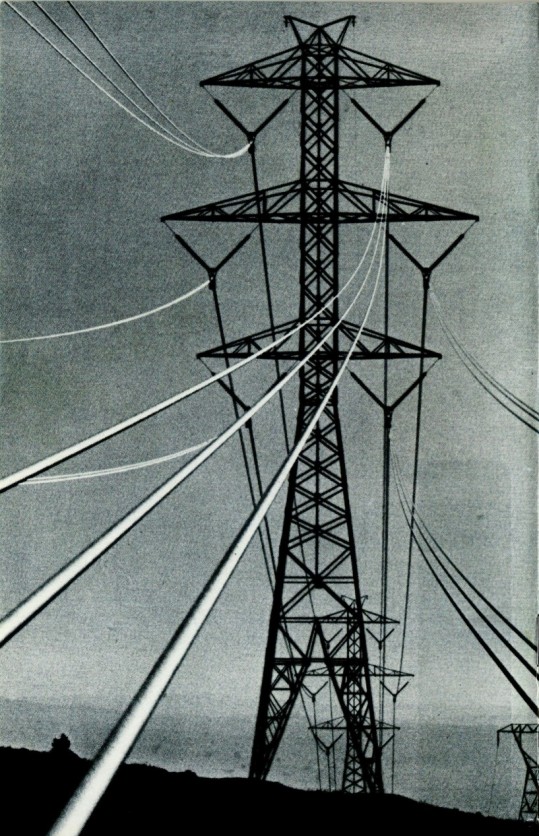Book Review: History of Bonneville Power
Reprinted from "Crown Jewels of the Wire", April 2006, page 4
Tower construction along the Columbia River in 1939 was precarious business.
Below, four men work on the a line from Bonneville Dam to The Dalles, Oregon.
Pictures on pages 4 to 6 are from a book about the history of the Bonneville
Power Administration entitled, "Power and the Pacific Northwest
1937-1976". The book contains a brief history of power systems nationwide,
but focuses on the Northwest. Crown Jewels highly recommends this publication
as a resource for power aficionados. Out of print, of course, you will have to
search for it from suppliers of used books.


Above: Men work high above ground to dead end a conductor on a BPA line from
Vancouver, WA to Eugene, OR. Notice that even at this late stage of construction
the insulators are still in their wooden packing crates. The year was 1939.

Above: In this picture from 1970, three men use "hot sticks" to
work on an energized conductor. Hard hats are now required. However, the
practice of suspending a wooden ladder from a tower cross beam is still in use.
Pyrex carnival glass suspension insulators were widely used on BPA lines.
However, I was unable to identify any in use in any of the dozens of pictures in
this 180 page soft cover book. It was written by Vera Springer and published by
the Dept. of Interior for the US bicentennial celebration.

The Bonneville Power Administration book
features a lot more than just line construction. Quite a bit is written on the
history and construction of dams in Oregon, Washington, Idaho and Montana. This
picture, from the late 1960's, is described as a Mercury arc valve at the Celilo
Converter Station on the northern end of a d-c intertie. 4,200 towers carried
three-point-four-million kilowatts of direct current power 845 miles from The
Dalles, OR to the Sylmar Substation in California when the intertie system was
completed in 1970. (See (below) the back cover of this issue for a view of transmission
towers on this line.)

| 